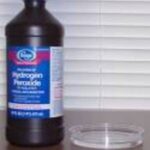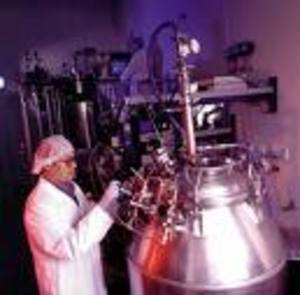We all pull this brown bottle out when we cut our finger or our little ones scrape their knees. The most common use for hydrogen peroxide is to clean wounds and cuts and prevent infection. But there are many different uses that hydrogen peroxide can come in handy for and save us money!
One thing we all detest if using self tanner is those dreaded streaks that almost always happen. If you find yourself with orange spots or streaks, use a cotton swab and apply a little hydrogen peroxide to the area. Just leave it on for a minute or two and then wipe your problem area with a damp cloth. Hydrogen peroxide has a natural bleach in it that lightens excess pigmentation which will even out your self tanner.
Do you wear a nail polish that leaves a stain on your fingernails or toenails that leave them looking yellow or stained after removing? Soak them in a bowl of hydrogen peroxide for a couple of minutes, then wipe under your nails to remove any color that may have gotten underneath them. This oxidizes the color in the polish and removes any discoloring in your nails.
Bacteria is the last thing we want on our cooking utensils or surfaces and an easy way to get bacteria from settling into a cutting board is to sanitize it with a paper towel or cloth soaked in hydrogen peroxide. Just wipe the clean wood or plastic board with this and it will kill salmonella and other organisms living deep in the surface. This can be done on countertops and other areas in the house. A cutting board alone can have 200 percent more fecal bacteria than a toilet seat!! Yuck!
If you are a fanatic about keeping germs off contact lenses but you know your cleaning solution only cleans deposits off them, use hydrogen peroxide. If your lens fell out and onto the dirty floor, soak it in hydrogen peroxide for at least 2 hours. Then rinse with a neutralizing solution before wearing again.
Hydrogen peroxide is also good for those of you who have pets and live out in the country or rural areas where skunks are found. Many of your dogs may run into one of these stinky creatures at one time or another, and if they are unfortunate enough they may even have been sprayed by one. If you are out of tomatoes juice simply fill a plastic container with a gallon of water and add 1 qt. of hydrogen peroxide, ¼ cup of baking soda and 2 teaspoons of liquid dish soap. Use rubber gloves and apply to your pet’s fur with a washcloth. Do not get it near your pet’s eyes. Leave this mixture on for 10 minutes and then rinse with water. This will neutralize the sulfur compounds and get rid of that stinky smell.
There are many other uses for hydrogen peroxide such as removing stains from teeth, cleaning carpets, toilets and treating acne with it.
These tips were found in First Magazine and online at http://www.using-hydrogen-peroxide.com/using-hydrogen-peroxide-for-cleaning.html.




